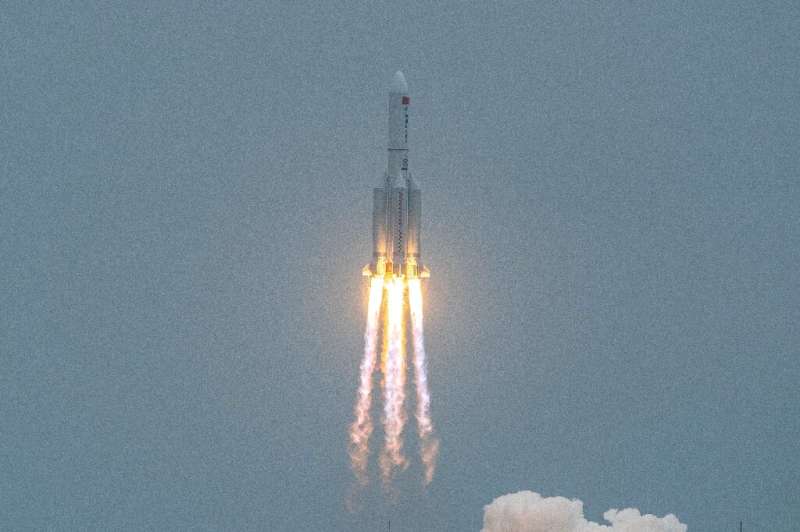Chinese authorities have said most of the rocket components would likely be destroyed on re-entry.
"The probability of causing harm... on the ground is extremely low," Chinese foreign ministry spokesman Wang Wenbin told reporters on Friday.
Although there has been fevered speculation over exactly where the rocket—or parts of it—will land, there is a good chance any debris that does not burn up will just splash down into the ocean, given that the planet is 70 percent water.
"We're hopeful that it will land in a place where it won't harm anyone," said Pentagon spokesman Mike Howard.
Howard said the United States was tracking the rocket segment but "its exact entry point into the Earth's atmosphere cannot be pinpointed until within hours of its re-entry".
Defense Secretary Lloyd Austin earlier said that the US military had no plans to shoot it down, and suggested that China had been negligent in letting it fall out of orbit.
"Given the size of the object, there will necessarily be big pieces left over," said Florent Delefie, an astronomer at the Paris-PSL Observatory.
"The chances of debris landing on an inhabited zone are tiny, probably one in a million."
In 2020, debris from another Long March rocket fell on villages in the Ivory Coast, causing structural damage but no injuries or deaths.
Jonathan McDowell, an astrophysicist at the Harvard–Smithsonian Center for Astrophysics, said that although there was no need to worry "too much", the rocket's design needed a re-think to stop such a scenario happening again.
"There is a real chance of damage to whatever it hits and the outside chance of a casualty," he said.
"Having a ton of metal shards flying into the Earth at hundreds of kilometres per hour is not good practice, and China should redesign the Long-March 5B missions to avoid this."
Explore further
© 2021 AFP



